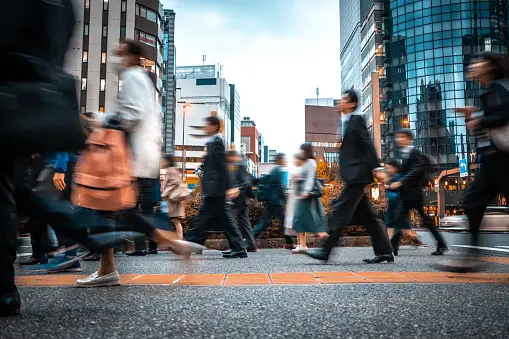Some Ideas on Street Photographers You Should Know
Some Ideas on Street Photographers You Should Know
Blog Article
An Unbiased View of Street Photographers
Table of Contents4 Easy Facts About Street Photographers DescribedThe 25-Second Trick For Street PhotographersUnknown Facts About Street PhotographersUnknown Facts About Street PhotographersExamine This Report about Street Photographers
Road professional photographers do not necessarily have a social objective in mind, but they like to separate and record minutes which may otherwise go unnoticed.Though he was influenced by much of those that affected the street photographers of the 1950s and '60s, he was not primarily curious about catching the spirit of the street. The impulse to visually document people in public began with 19th-century painters such as Edgar Degas, douard Manet, and Henri de Toulouse-Lautrec, who worked side by side with digital photographers attempting to catch the significance of city life.
Since of the somewhat primitive modern technology readily available to him and the lengthy exposure time required, he battled to catch the stress of the Paris roads. He explore a series of photographic methods, trying to find one that would permit him to capture movement without a blur, and he located some success with the calotype, patented in 1841 by William Henry Fox Talbot. In comparison to Atget, photographer Charles Marville was worked with by the city of Paris to develop an encyclopaedic paper of Haussmann's metropolitan preparation job as it unfolded, thus old and brand-new Paris. While the professional photographers' subject was basically the exact same, the outcomes were significantly different, demonstrating the influence of the digital photographer's intent on the character of the pictures he generated.
Offered the fine top quality of his photographs and the breadth of product, designers and artists usually purchased Atget's prints to utilize as referral for their own job, though commercial passions were barely his major motivation. Instead, he was driven to picture every last remnant of the Paris he loved. The mingled interest and urgency of his objective shine through, leading to photographs that narrate his own experience of the city, qualities that expected road photography of the 20th century.
Things about Street Photographers
They expose the city with his eyes. His work and fundamental understanding of photography as an art kind offered as ideas to generations of digital photographers that followed. The future generation of street professional photographers, though they likely did not refer to themselves therefore, was introduced by the photojournalism of Hungarian-born professional photographer Andr Kertsz.
Unlike his peers, Brassa utilized a larger-format Voigtlnder camera with a longer exposure time, forcing him to be much more computed and thoughtful in his technique than he may have been if using a Leica.
Cartier-Bresson was a champ of the Leica cam and among the initial photographers to maximize its capacities. The Leica enabled the professional photographer to engage with the environments and to record moments as they happened. Its reasonably small dimension likewise aided the photographer discolor right into the history, which was Cartier-Bresson's recommended strategy.
Some Ideas on Street Photographers You Need To Know
It is because of this basic understanding of the art of picture taking that he is often attributed with uncovering the tool throughout once more roughly a century since its creation. He took photographs for more than a half century and influenced generations of professional photographers to trust their eye and instinct in the moment.
These are the questions I will try to respond to: And after that I'll leave you with my own meaning of street digital photography. Yes, we do. Let's start with specifying what an interpretation is: According to (Street Photographers) it is: "The act of specifying, or of making something definite, distinctive, or clear"
No, definitely not. my website The term is both restricting and misdirecting. Sounds like a road photography should be pictures of a streets appropriate?! And all street digital photographers, besides a handful of absolute novices, will totally value that a street is not the vital element to road photography, and actually if it's a photo of a road with maybe a few monotonous people not doing anything of interest, that's not road photography that's a picture of a street.
The 2-Minute Rule for Street Photographers
He makes a valid factor important site do not you think? Nonetheless, while I agree with him I'm uncertain "honest public digital photography" will certainly capture on (although I do kind of like the term "honest digital photography") due to the fact that "road photography" has actually been around for a long period of time, with many masters' names connected to it, so I believe the term is right here to remain.
You can fire at the coastline, at a festival, in a street, in a park, in a piazza, in a cafe, at a gallery or art gallery, in a city station, at an occasion, on a bridge, under a bridge ...
Yes, I'm afraid we terrified no choice! Without guidelines we can not have an interpretation, and without a definition we do not have a category, and without a category we do not have anything to specify what we do, and so we are stuck in a "policies definition style" loophole!
Some Known Incorrect Statements About Street Photographers

Report this page